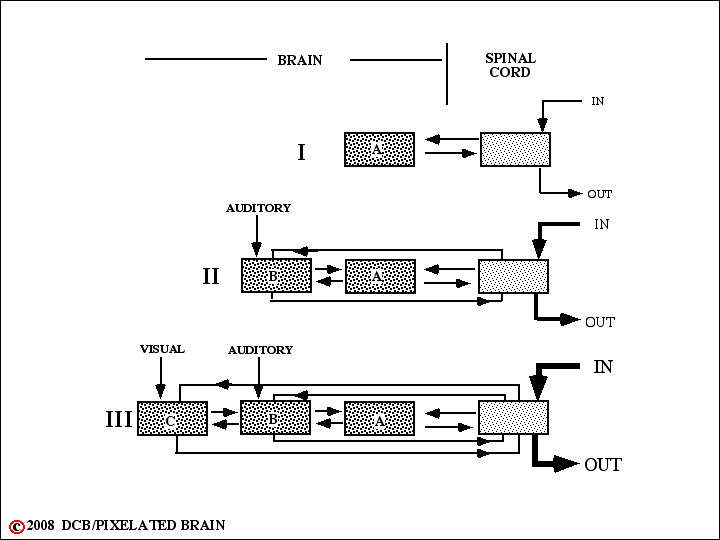
PIXBRAIN HOME _ _ _ MOD 3 HOME _ _ _ previous _ _ FIGURE 3-1__ _ next _ _ _ I WANT TO
- - - In primitive vertebrates (I), a very limited amount of sensory information enters the spinal cord by way of dorsal roots. To a great extent, the cord is capable of processing this information and organizing an appropriate motor response, but a rather rudimentary brain (A) participates in this process.
- - - In more developed vertebrates (II), the spinal cord receives much more sensory information and must formulate a more complex response. It needs greater help from the brain. Rather than discard brain A and start all over it saves A (being frugal) but adds B to provide added "computing" power. B receives inputs from A and also directly from the spinal cord. It might get - say - and auditory input, as well. It integrates all this information and sends "motor" instructions caudally, both via A and also directly to the spinal cord.
- - - As evolution continues, yet a third unit, C, is added, rostral to B. It might also receive a visual input and further refine the process of analysis.
- - - The human brain is organized in this way. Two results of this are: 1) there are many parallel pathways , both ascending and descending, that connect the brain with the spinal cord and 2) when a "higher" region of the brain (C) is damaged, the remaining regions may continue to function, although the "quality" of the motor response to any sensory stimulus will be diminished.